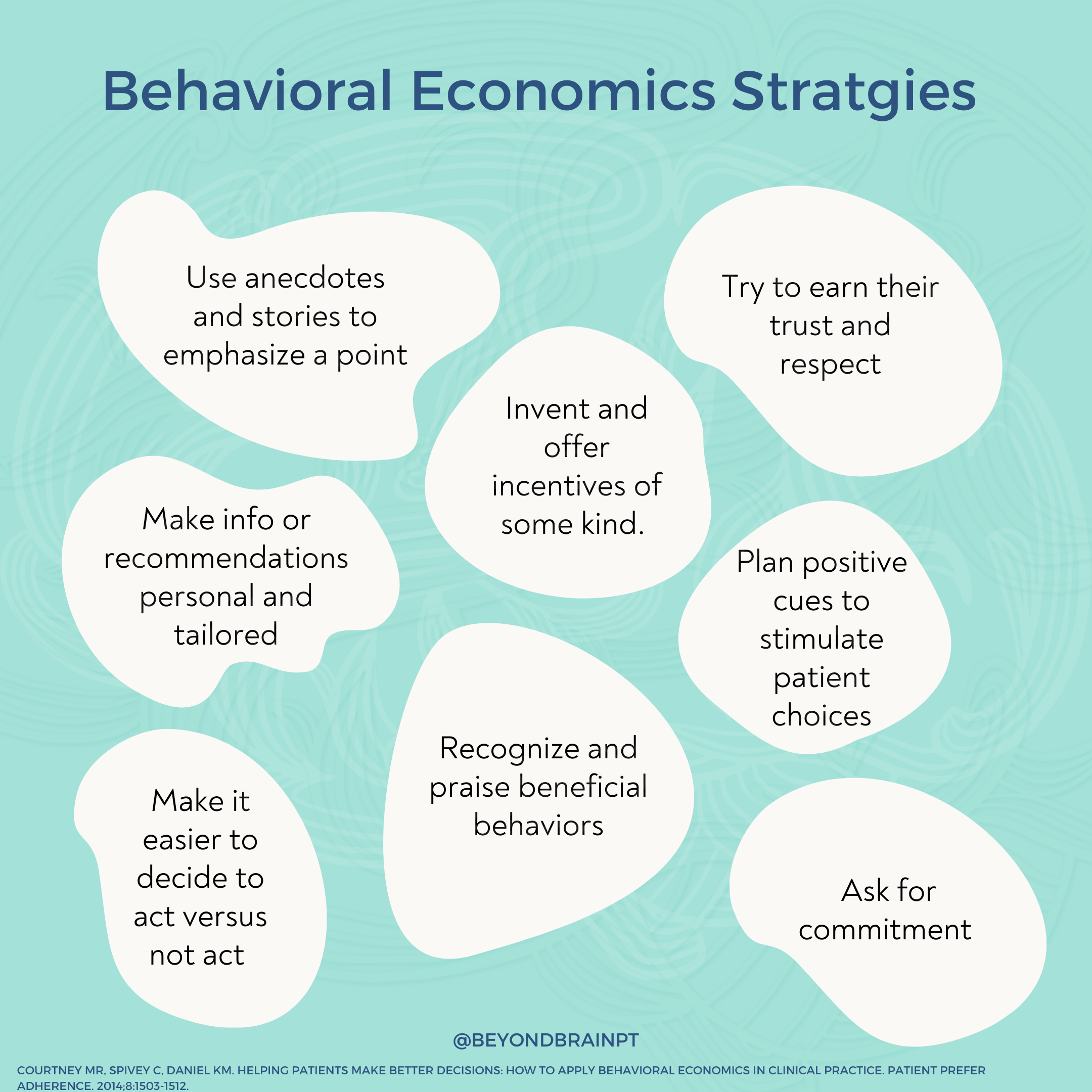Behavioral Economics
I signed up about a week ago to take a course on improving my soft skills to facilitate improved therapeutic alliance and outcomes for my clients. As a bonus for signing up for the course, there was a sneak preview of some central concepts. It was a 1-hour webinar with valuable nuggets of wisdom and insight. one of the gems I took from the webinar was the concept of behavioral economics.
I’ve never heard that phrase before, so I was interested in understanding what that meant how human behavior could apply the principles of economics to human behavior.
Behavioral economics is essentially the study of how individuals analyze economic choices and make decisions.
“‘The goal of behavioral economics is to identify the various triggers that shift behavior and then use those triggers to create an environment that makes it easier for individuals to make healthy decisions,’ says Rick Leander, CEO of LFB Holdings, a behavioral insights consulting company in Winston-Salem, North Carolina.”
It turns out this has been a marketing tool for quite some time. Examples include when a health insurance company makes in-network options more affordable than out-of-network options, thus impacting which one you may choose more easily.
Another example to consider is a sale item with a limited-time discount or limited quantity, triggering a scarcity fear in the buyer to act quickly. The perception of short supply or missing the deal may persuade you to buy something in haste due to the feeling of urgency applied to the offer.
When thinking of these scenarios, the thought of behavioral economics can seem manipulative. Still, there are other times that too many decisions can feel overwhelming, and having a compelling reason to support or suggest a particular decision can keep us not taking action.
We all learned about supply and demand in high school economics. Still, behavior economics so a few steps more profound to describe why decisions we make seem to be inconsistent or adverse to the traditional supply and demand theory.
But then I started to think, if the world around us constantly influences our behavior, how can we harness this to shift ourselves into the behavioral aligned with our essential core values? Is there a way to use this seeming, sensitive area to drive behavioral movement changes for good?
“Behavioral economics recognizes, based on research findings, that people’s decisions are influenced by many factors. In fact, people:
are not always rational and do not always act in their own best interest or make decisions based on emotion or affect, and thus are more receptive to anecdotes and stories than to statistics;
adopt rules of thumb to deal with limited information-processing capacity;
are overly confident and optimistic in certain situations;
pay more attention to information that seems relevant (salient) to them;
tend to follow through with promises that are made publicly;
tend toward inertia of actions, willingly accepting preset options (defaults);
are loss-averse, such that losing something causes more mental anguish than gaining something of the same value;
are strongly influenced by the manner in which information is presented to them and who communicates the information (framing);
respond to incentives;
have present-biased preferences, which means that present benefits and costs are valued more than future benefits and costs. Thus, an immediate reward of $10 is valued more than a future reward of the same amount, and an immediate cost of $10 feels larger than a future cost of $10;
respond to social pressure and are heavily influenced by the (perceived) actions of those around them.”
Here are 8 strategies for applying behavioral economics in healthcare practice.
References and Resources:
Courtney MR, Spivey C, Daniel KM. Helping patients make better decisions: how to apply behavioral economics in clinical practice. Patient Prefer Adherence. 2014;8:1503-1512. Published 2014 Oct 29. doi:10.2147/PPA.S71224
Pinto, Daniel. THE ROLE OF BEHAVIORAL ECONOMICS IN PHYSICAL THERAPY , APTA CSM 2018

